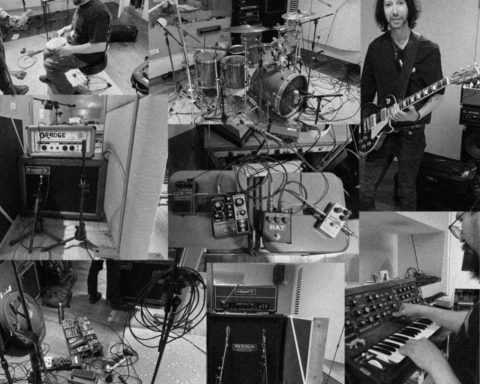Any discussion of rock ‘n’ roll, blues, jazz, and pretty much any other music that makes a person want to get up and dance is incomplete without mentioning the electric guitar. Most importantly, this is a trick, for under the attractive appearance and the pleasant sound, the electric guitar is a real masterpiece in engineering. Each part of the guitar is involved in the music created by the strings, and learning how each is involved can lead to new opportunities in the sound you create.
This blog will benefit both beginners and experienced guitar players. Knowledge of your guitar’s particular features will help you achieve the desired sound.
1. Pickups: Your Guitar’s Heart and Soul
Pickups are like the pulse of your electric guitar or the heart of your acoustic electric guitar. They are compact magnetic coils placed just beneath the strings, and their job is to translate the string vibrations of your guitar into electrical impulses. From there, the signals are transmitted to your amplifier, thus translating the physical energy of your playing into the sound most of us are familiar with.
Two main types of pickups influence your tone
Single-Coil Pickups: Being bright and crisp in sound, single-coil pickups are used in blues, country, and indie rock. They produce a clear, precise sound but are more likely to ‘pick up’ interference or buzz.
Humbuckers: If you are a musician looking for a thicker and warmer sound with less interference, then humbucker pickups are the best for you. They’re meant to ‘buck’ the hum, as it is called, so you get a more rounded tone ideal for rock, metal and jazz.
2. The Bridge: A Balancing Act
The bridge of your electric guitar might seem simple, but it’s responsible for two vital things: string stability and tone. The bridge is also an electric guitar part that helps secure the strings, greatly impacts how your guitar sustains a note, and transfers the vibrations to the guitar’s body.
There are different types of bridges, each bringing its sonic flavor:
Fixed Bridge: This type of bridge gives good tuning stability and is preferred by those players who use palm muting or play in different tunings. It is simple, providing a clear, steady tone suited to most playing styles.
Tremolo Bridge (or Whammy Bar): If you are into pitch bending and dive bombs, this is your playing ground. The tremolo bridge means that you can move the whammy bar up and down to change the tension of the strings and pitch for great sound. Imagine Eddie Van Halen or Jimi Hendrix!
How the Bridge Shapes Your Sound: The contact point that the bridge has with your strings determines the level of tuning stability and the amount of sustain and resonance that your guitar has. Fixed bridges provide more resonance, whereas in the tremolo systems, you can add that wild vibrato or flutter to your playing.
3. The Neck and Fretboard: Your Hands’ Best Friend
Even though the neck and the fretboard may not be as flashy as the pickups or the bridge, they do have a rather large impact on the way you play and the comfort level of the instrument. The neck shape, size and fretboard material determine the ease or difficulty of playing your guitar, especially during fast solos or complex chord changes.
Neck Profile: The thickness and shape of a guitar’s neck (or sometimes known as the “profile”) differ from one another. Some necks are rounder and chunkier for those who want to bury themselves into the strings with more pressure. Some are leaner and quicker, perfect for slicing.
Fretboard Material: Popular types of wood are rosewood, maple, and ebony; however, each has a different texture and pitch. Maple is bright and snappy, while rosewood is warmer and more resonant. Ebony has been seen to provide the sharpest answer most of the time.
How the Neck and Fretboard Shape Your Sound: In addition to comfort, the neck and fretboard play a small part in determining the tone of your guitar. Maple boards provide a little more tension, while rosewood is warmer and richer, changing the characteristics of notes and their sustain.
4. The Body: It’s More Than Just Looks
These aspects of the guitar’s body define its appearance as much as they impact the sound that is produced. Each type of wood has its specific sound, which makes your guitar sound the way it does, and the body size affects how easy it is to hold and manipulate.
Solid Body: The most popular kind, solid-body electric guitars are designed for handling high gain and volume without feedback. Because of their way of being worn, they are ideal for rock, metal and punk music styles. Just to name a few, you would probably remember the Gibson Les Paul or the Fender Stratocaster.
Semi-Hollow and Hollow Body: These guitars contain less weight and sound more lively, increasing the grumbles or, to be precise, the warmth of the sound. Jazz, blues and independent bands love them because of their acoustic properties, but they are a little more susceptible to feedback at loud volumes.
Shaping Your Signature Sound
An electric guitar parts are not only a component but a flexible object that embodies and reflects your personality and creativity. Pickups and bridges, bodies, fretboards – all contribute to how you approach a guitar and how it will produce sound. Knowing how these elements work together will help you start deciding on your guitar setup, if you want a warm-sounding guitar or a guitar that cuts through the mix.
Remember that your sound is your sound; every change you make to your electric guitar parts is a step toward your ideal sound. Therefore, charge it up, crank up your volume and let your guitar talk!














